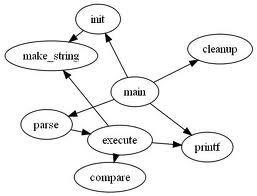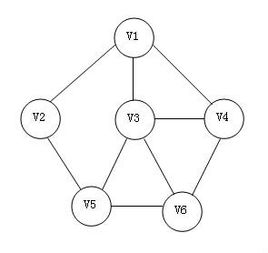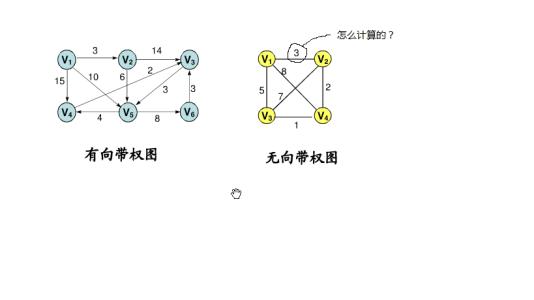20162328蔡文琛 week10 大二
20162328 2017-2018-1 《程序设计与数据结构》第十周学习总结
教材学习内容总结
理解图与有向图、无向图
理解带权图
会应用带权图
理解图的广度优先遍历和深度优先遍历
掌握最小生成树算法
掌握图的实现
有向图,无向图
如果给图的每条边规定一个方向,那么得到的图称为有向图,其边也称为有向边。在有向图中,与一个节点相关联的边有出边和入边之分,而与一个有向边关联的两个点也有始点和终点之分。相反,边没有方向的图称为无向图。


带权图
在处理有关图的实际问题时,往往有值的存在,比如公里数,运费,城市,人口数以及电话部数等。一般这个值成为权值,带权值的图称为带权图或赋权图。也称为网。
最小生成树算法

public class WeightedGraph {
private final int MAX_VERTS = 20; //最大顶点数
private final int INFINITY = 100000; //最远距离...表示无法达到
private Vertex[] vertexArray; //存储顶点的数组
private int adjMat[][]; //存储顶点之间的边界
private int nVerts; //顶点数量
private int currentVert; //当前顶点索引
private PriorityQ thePQ; //存储边的优先级队列
private int nTree; //最小生成树中的顶点数量
public WeightedGraph() {
vertexArray = new Vertex[MAX_VERTS];
adjMat = new int[MAX_VERTS][MAX_VERTS];
for(int i = 0; i < MAX_VERTS; i++) {
for(int j = 0; j < MAX_VERTS; j++) {
adjMat[i][j] = INFINITY; //初始化所有边界无穷远
}
}
thePQ = new PriorityQ();
}
public void addVertex(char lab) { //添加顶点
vertexArray[nVerts++] = new Vertex(lab);
}
public void addEdge(int start, int end, int weight) {//添加带权边
adjMat[start][end] = weight;
adjMat[end][start] = weight;
}
public void displayVertex(int v) {
System.out.print(vertexArray[v].label);
}
/*
* 带权图的最小生成树,要选择一条最优的路径
*/
public void MinSpanningTree() {
currentVert = 0; //从0开始
while(nTree < nVerts-1) { //当不是所有节点都在最小生成树中时
//isInTree是上一节Vertex类中新添加的成员变量 private boolean isInTree;
//表示有没有加入到树中,初始化为false
vertexArray[currentVert].isInTree = true; //将当前顶点加到树中
nTree++;
//往PQ中插入与当前顶点相邻的一些边界
for(int i = 0; i < nVerts; i++) {
if(i == currentVert) //如果是本顶点,跳出
continue;
if(vertexArray[i].isInTree) //如果顶点i已经在树中,跳出
continue;
int distance = adjMat[currentVert][i]; //计算当前顶点到i顶点的距离
if(distance == INFINITY)
continue; //如果当前顶点与i顶点无穷远,跳出
putInPQ(i, distance); //将i节点加入PQ中
}
if(thePQ.size() == 0) { //如果PQ为空,表示图不连接
System.out.println("Graph not connected!");
return;
}
Edge theEdge = thePQ.removeMin();
int sourceVert = theEdge.srcVert;
currentVert = theEdge.destVert;
System.out.print(vertexArray[sourceVert].label);//这里就是一步步打印最小生成树的路径
System.out.print(vertexArray[currentVert].label);
System.out.print(" ");
}
}
//这个方法是将一个Edge放入优先级队列,保证队列中每个Edge的des顶点是不同的。
private void putInPQ(int newVert, int newDist) {
int queueIndex = thePQ.find(newVert);//判断PQ中是否已经有到相同目的顶点的边界
if(queueIndex != -1) { //如果有则与当前顶点到目的顶点的距离作比较,保留短的那个
Edge tempEdge = thePQ.peekN(queueIndex);//get edge
int oldDist = tempEdge.distance;
if(oldDist > newDist) { //如果新的边界更短
thePQ.removeN(queueIndex); //删除旧边界
Edge theEdge = new Edge(currentVert, newVert, newDist);
thePQ.insert(theEdge);
}
}
else { //如果PQ中没有到相同目的顶点的边界
Edge theEdge = new Edge(currentVert, newVert, newDist);
thePQ.insert(theEdge);//直接添加到PQ
}
}
}





